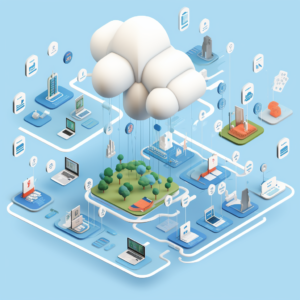 The education landscape has undergone a profound transformation in recent years, with the rise of distance learning and online education. Telephony, the technology of transmitting voice and data over long distances, has played a significant role in bridging gaps in distance learning and enhancing the educational experience. In this article, we will explore how telephony is making a positive impact on education.
The education landscape has undergone a profound transformation in recent years, with the rise of distance learning and online education. Telephony, the technology of transmitting voice and data over long distances, has played a significant role in bridging gaps in distance learning and enhancing the educational experience. In this article, we will explore how telephony is making a positive impact on education.
**1. **Improved Access to Education: Telephony has enabled educational institutions to reach a broader audience. Through toll-free numbers and interactive voice response (IVR) systems, students from remote and underserved areas can access educational resources, lectures, and support services without the need for high-speed internet or sophisticated devices.
**2. **Teacher-Student Communication: Telephony facilitates direct communication between teachers and students. Voice calls and SMS messaging can be used for clarifying doubts, providing feedback, and offering guidance, fostering a more personalized and interactive learning experience.
**3. **Emergency Alerts: In times of crises, such as natural disasters or public health emergencies, telephony serves as a vital communication tool for educational institutions. Automated phone calls and text messages can be used to disseminate important information, ensuring the safety of students and staff.
**4. **Parent-Teacher Communication: Telephony helps strengthen the relationship between parents and teachers. Schools can use phone calls and SMS updates to keep parents informed about their child’s progress, upcoming events, and school announcements.
**5. **Homework Hotlines: Some educational organizations have established homework hotlines where students can call in for assistance with their assignments. These hotlines provide on-demand support and encourage independent learning.
**6. **Language Learning: Telephony can be used for language learning programs. Students can practice speaking and listening skills by engaging in phone conversations with native speakers or language tutors.
**7. **Interactive Learning: Interactive voice response (IVR) systems can be used to create interactive learning modules. Students can navigate through lessons, answer questions, and receive immediate feedback using their phones.
**8. **Support for Students with Disabilities: Telephony is an accessible communication tool for students with disabilities. Voice-based interactions and auditory content can be more inclusive for those with visual or motor impairments.
**9. **Homework and Exam Reminders: Educational institutions can use automated phone calls and text messages to remind students of important dates, such as homework deadlines and exam schedules, helping them stay organized.
**10. **Feedback Collection: Telephony can be used to collect feedback from students and parents, helping schools and colleges make improvements to their programs and services.
**11. **Professional Development: Teachers and educators can access telephony-based professional development resources, including recorded workshops and lectures, to enhance their teaching skills.
**12. **Community Engagement: Telephony can be used to engage with the community surrounding educational institutions. Schools and colleges can use phone calls and SMS messaging to promote events, seek volunteers, and involve the community in educational initiatives.
In conclusion, telephony has become an invaluable tool in the field of education, particularly in the context of distance learning and remote education. It has expanded access to education, improved communication between stakeholders, and enhanced the overall learning experience. As technology continues to evolve, telephony will likely continue to play a crucial role in shaping the future of education, making learning more accessible and interactive for students around the world.
© 2025 etollfree.net — All rights reserved.
We’re on a mission to build a better future where technology creates good jobs for everyone.